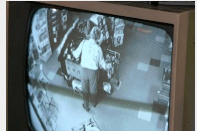The losses big retailers like Wal-Mart faces every year are astronomical. The losses though are not absorbed by these big retailers, the losses are then passed to the consumer like you and me by paying higher prices in their store. Shoplifting is a crime that affects everyone. Some big businesses like Wal-Mart can deal with their losses. Shoplifting for small businesses can mean closing their doors for good. Is your store dealing with shoplifting or employee theft? Is it working? Read more about this topic by following the links below.
Wesley Chapel, Fla. — More than1.2 million shoplifters and dishonest employees were apprehended in 2014 by just 25 large retailers who recovered over $225 million from these thieves, according to the 27th Annual Retail Theft Survey conducted by loss prevention and inventory shrinkage control consulting firm Jack L. Hayes International. The participants were made up 25 large retail companies with 23,250 stores and over $700 billion in retail sales (2014).
“In 2014, the number of apprehensions and recovery dollars were up again for both shoplifters and dishonest employees. Shoplifting apprehensions rose 7.4%, while dishonest employee apprehensions rose 1.7%. The dollars recovered from apprehended shoplifters and dishonest employees also rose, 7.5% and 18.1% respectively,” said Mark R. Doyle, president of Jack L. Hayes International.
The increases, follow similar increases reported the previous three years.
Highlights from annual theft survey include:
• Apprehensions: 1,272,560 shoplifters and dishonest employees were apprehended in 2014, up 7.1% from 2013.
• Recovery dollars: Over $225 million was recovered from apprehended shoplifters and dishonest employees in 2014, up 10.4% from 2013.
• 1,192,194 shoplifters were apprehended in 2014, up 7.4% from 2013.
Here’s How Much Walmart Loses Every Year to Theft
Walmart is fighting back against “unknown shrinkage”
When you’re a company as big as Walmart, everything about you is huge, even your losses from shoplifting.
The retailing giant says that it loses about $3 billion every year from theft, or 1% of its $300 billion in revenue, Reuters reports.
Leading the effort to fight back against this so-called “shrinkage” is Greg Foran, head U.S. operations, who told reporters Thursday that cutting down on these loses was a key priority for the firm in coming months.
“One percent of $300 billion is quite a lot of money. If you can save 10 basis points of it – boy I’ll take it every day of the week and put it into lower prices for customers,” Foran said to Reuters.
6 Ways Small Businesses Can Effectively (and Cheaply) Prevent Shoplifting
Shoplifting remains a constant issue for American small businesses, leading to losses of over $10 billion each year. According to the Loss Prevention Research Council, 1 out of 11 customers is a habitual shoplifter (repeat offender!). Small businesses have slim profit margins, which means that “shrinkage” (reduced inventory to shoplifting and thefts) can really put immense pressure on their ability to stay afloat. Some of the fastest growing and most successful brands out there have recently employed innovative tactics to discourage shoplifting, largely harnessing the power of consumer psychology. Check out 6 of their most successful tactics, that any small business can easily, and cheaply, start using to discourage and prevent shoplifting!
1. Strategic Checkouts
Place your checkout registers near the front door to dramatically reduce the likelihood of a shoplifter. Most shoplifters prefer to enter the store and then make a quick exit, without passing by an employees. Having customers come in near your employees will also provide your staff with the opportunity to greet new customers, a big plus for customer service and yet another major deterrent of shoplifting. One of the most successful new techniques was introduced by Apple stores — make your registers mobile, on tablets or “phablets.” Have your employees roaming the store, and check-out people right where they encounter them. This tactic has already been adopted by many nationwide retailers as a quick and easy way to dramatically reduce their shrinkage.







